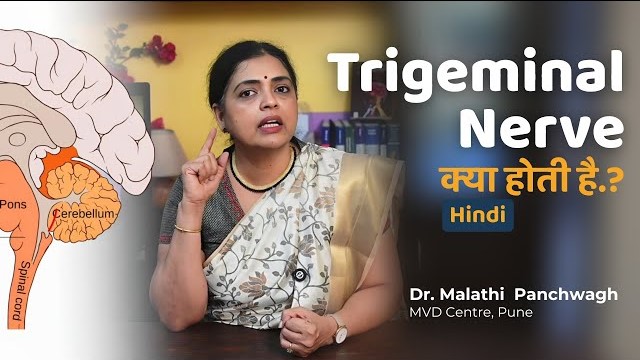Trigeminal Nerve: The Main Sensory Pathway of the Face


Dr. Malti Panchawagh, an anesthesiologist and perioperative physician at MVD Center, provides an in-depth explanation of the Trigeminal Nerve—also known as the fifth cranial nerve—and its essential role in sensory perception and muscle control of the face.
Understanding the Background: Cranial Nerves
Our body has millions of nerves that act as messengers between the brain and different body parts. Among these, cranial nerves are a special set that emerge directly from the brain, specifically serving the head and neck region.
There are 12 pairs of cranial nerves—12 on each side. Despite being only 24 nerves in total, they manage essential tasks like eye movement, hearing, facial sensation, speech, and swallowing.
Each cranial nerve is identified by a specific name, number, and function, and most arise from the brainstem, the lower part of the brain.
What Is the Trigeminal Nerve?
The trigeminal nerve is the 5th cranial nerve (cranial nerve V). It is the largest sensory nerve in the face and also controls certain motor functions.
- It helps you feel sensations on your face.
- It also assists in moving facial muscles, especially those used for chewing.
Origin of the Trigeminal Nerve
This nerve originates from the pons, a region in the lower part of the brainstem. It is called “trigeminal” because it divides into three distinct branches, each controlling different facial areas.
The Three Divisions of the Trigeminal Nerve
1. Ophthalmic Division (V1)
- This is the uppermost branch.
- It transmits sensory signals from the eyes, forehead, and upper nose.
- For example, the sensation of cold wind on the forehead or eye irritation is due to this division.
2. Maxillary Division (V2)
- This is the middle branch.
- It provides sensory input from the upper cheek, upper lip, and upper teeth.
- That tingling sensation you get in your upper teeth after eating ice cream? That’s the V2 branch in action.
3. Mandibular Division (V3)
- This is the largest and only mixed (sensory + motor) branch.
- It controls jaw muscles, enabling you to chew and speak.
It also carries sensation from the lower jaw.
Final Word from Dr. Malathi Panchwagh
The trigeminal nerve is a silent powerhouse working behind the scenes. As the main sensory nerve of the face and a key player in jaw movement, it handles multiple crucial tasks through its three branches.
Written by:
Dr. Malathi Panchwagh
Anesthesiologist | Perioperative physician
Leave a Reply Cancel reply

A distinguished Brain and Spine Surgeon, shaping neurosurgical care in Pune, Maharashtra, India for over two decades.
Quick Link

Quick Contacts
- Phone : (+91) 9011333841 , (+91) 7720948948
- brainspine66@gmail.com
- 102, Bhagyatara Society, 1st floor, Mehendale Garage road, Erandwane, Pune
Map
- Copyright @2025 | Dr. Jaydev Panchwagh | Praavi Medicare
